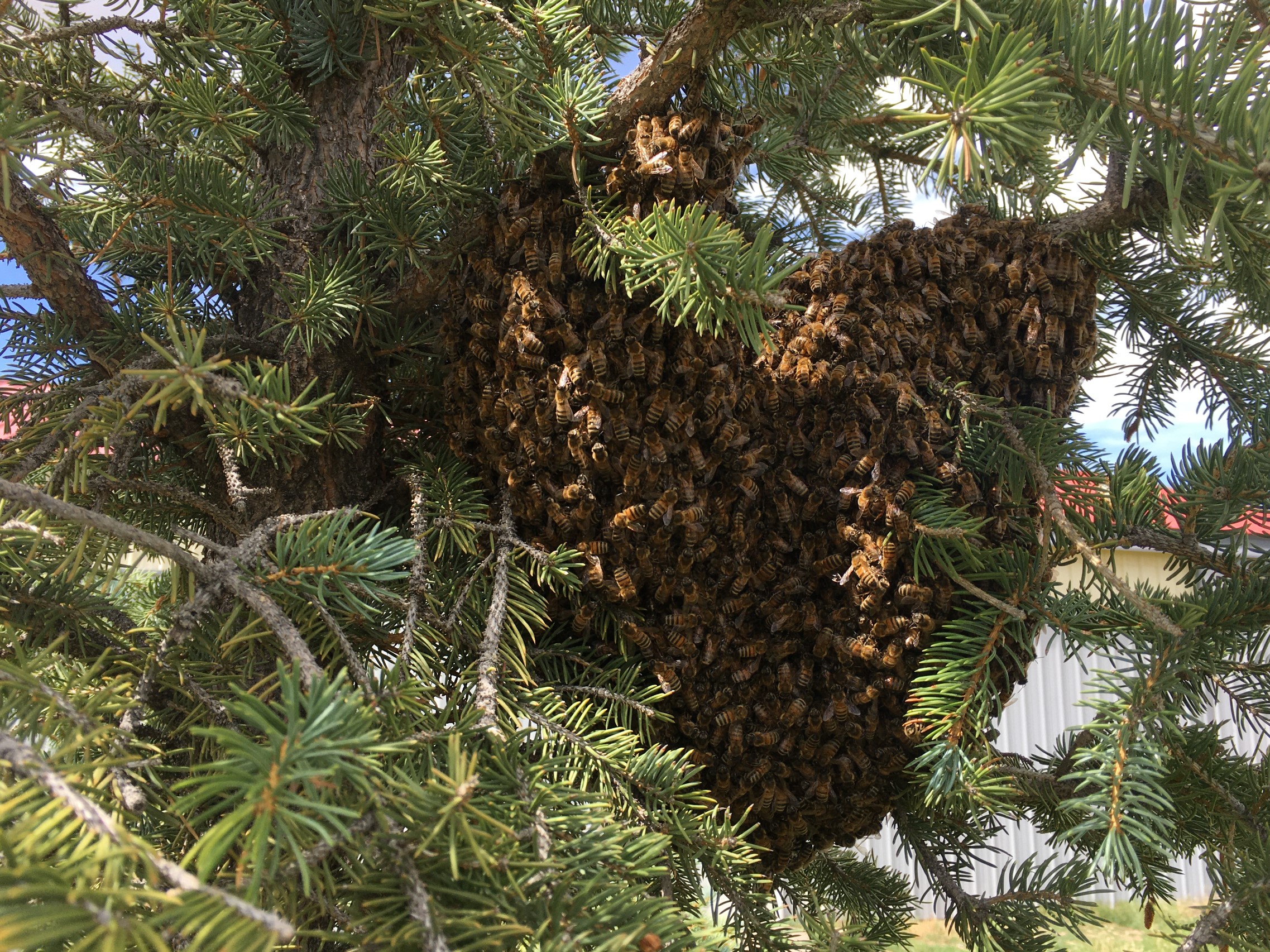- Hits: 4298
Think you have a swarm?
Awesome! Now what?
- Don't spray them! Honey bee swarms are just a group of worker bees with the queen in the center looking for a new home - this is a natural part of their reproductive process and is one way we can get new bee colonies from established hives. Bee swarms may be alarming, but they are not a danger if left alone to be handled by experienced beekeepers.
- Call for help! If you live in Colorado, you can use the statewide swarm hotline or call your local country extension office or beekeepers' association.
If you contact the right folks, someone will come collect the swarm and make sure they find a good home!
We have local beekeepers from our club networked within the Colorado state swarm hotline (1-844-SPY-BEES or 1-844-779-2337) who you will be connected with when you call and enter your town/area information.
-
- Colorado State Swarm Hotline: 1-844-SPY-BEES (1-844-779-2337)
You will need to tell the automated system your city/area and it will connect you to the swarm-ready beekeepers in your area. - Click here for a list of Colorado State University Extension offices to contact.
- Colorado State Swarm Hotline: 1-844-SPY-BEES (1-844-779-2337)
- Hits: 3705
Identifying a Swarm
A swarm experience depends on many factors and can vary signficantly based on the weather, the size and location of the swarm, and how long the swarm has been searching for a new home.
Honey bees typically swarm earlier in the season and are often confused with other yellow & black flying creatures that buzz. Chances are, if you are seeing a lot of flying activity of buzzing insects in September, they are wasps and not honey bees.
Things you may see in a swarm:
- a mass of bees hanging or sitting somewhere - perhaps in a tree or on a fence
- docile temperament - they are just hanging out waiting for scouts to come back and tell them about any new homes they may have found
- flying bees - scouts will come and go and if they group decides to move, they will take off and move together
- honey bees - fuzzy, somewhat rounded honey bees
Things you won't see in a swarm:
- wasps - smooth, shiny, sometimes striped and sometimes not striped with significantly narrow waists
- vigorous foraging activity - sometimes bees will gather food or resin from trees or plants in overwhelming numbers - this occassionally is confused with a swarm
- Hits: 1975
Honey bee swarming is a natural process, but there are many things a beekeeper can do to prevent it. Carefully managing colonies so they always have right amount of resources is a big part of avoiding swarms - they need ample space, not too many queen cups for raising new queens, etc.
However, sometimes it happens anyway.
Last spring I thought I was managing my colonies by performing splits (splitting one hive into two rather than letting them swarm on their own). One of the older queens I split left her new hive anyway and since I was lucky enough to be around the day it happened, I got three hives instead of two!
In this video you can see the last of the small swarm working their way into the new hive. I found them just as a thunderstorm began, so by the time I actually got to collect them they were wet and cold - but they made it and appear to have overwintered well.
~ KT
- Hits: 989
Two ECB board members responded to this State Swarm Hotline dispatch south of Bennett June 30, 2021!


Pictures submitted by KT Thompson
Page 1 of 2







